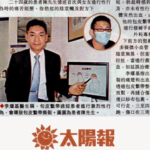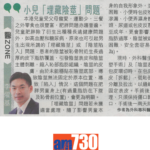
What is a Keloid (Keloid scar)?
A keloid (keloid scar) is a raised or thickened scar that tends to grow rapidly above and beyond the surface of the skin at the site of an injury. Keloid may appear as a smooth surface, pink, red, purple, or brown raised plaque or mass on the skin surface. Keloids tend to be irregularly shaped and may become progressively enlarged. Unlike other forms of scarring, keloids do not resolve or soften completely over time.
Keloid is an overgrowth of the scar tissue that develops around a wound or a specific site of skin injury. Keloid is sometimes confused with a hypertrophic scar. Keloid usually grows beyond the original borders of the wound, whereas hypertrophic scar stays within the wound border.
When keloid was first described in 1806, the original term was 'cheloide', taken from the Greek word 'chele', meaning crab's claw. This refers to the way the keloid grows sideways, beyond the normal wound edge and into the normal skin.
It can develop after acne spots and boils, body piercings, burns, lacerations, and surgical wounds. Infection and excessive stretching of the wound increase the risk of keloid formation.
Cause
The exact cause is not known. However, people with darker skins are more common to have keloids, especially African-American races. Studies of African people have shown that 6-16% develop keloid. Half of people with keloid will have other members of the family who have also developed keloids. There is an equal sex distribution. Keloids usually happen at 10-30 years of age and are less common at the extremes of age. Common sites for keloids are earlobe, cheek, shoulder, and sternum.
Symptoms
Keloid typically starts to develop about 3 - 12 months after the original skin damage. Initially, the scar becomes rubbery, raised, and expanded beyond the borders of the original damage. The color of the keloid may change and can be red, purple, pale, or brown. It may be tender, itchy, painful, or sometimes produce a burning sensation. Most people can identify the cause of their keloids, but some keloids develop without any apparent skin injury. The common areas of keloid formation are the earlobe, face, shoulder, and sternum. Keloids growing over a joint can cause joint range restriction. Sometimes, keloid can be infected.
Growth of keloids can be fast or slow and are unpredictable. Keloid may grow for a few weeks to a few months, fast or slow, and then stops growing. As keloids stop growing, they remain the same size or get a little bit smaller. A matured keloid may shrink slightly over time but almost never disappears completely.
Diagnosis
Treatment
Conservative Treatment
In the past, the treatment of keloid was not very effective. Some patients chose to live with an insightful, itchy, painful, red, and growing keloid. Silicone patches, silicone occlusive dressings, and pressure garments can be used with varying degrees of success in the long-term treatment of keloid scars. Nowadays, there are effective treatments available. Most patients can get rid of their keloids with modern treatments. Most surgeons choose a combination of treatments to get rid of the keloids. Treatment options include:
Steroid Injection Treatment
Steroids Injection
Most keloids respond very well to repeated direct local injection of steroids (e.g., triamcinolone, methylprednisolone).
Traditional Steroid Injection
Traditional steroid injection involves mixing steroid with local anesthetic. Injection directly to the keloid causes severe pain.
Modern Nearly Painless Steroid Injection
Injection-related pain can be reduced to a minimum with the use of local anesthetic cream over the keloid 15 - 30 minutes before any injection, and injecting subcutaneous local anesthetic blocking the nerve sensation around the keloid. These will make the process of steroid injection nearly painless and increase the effectiveness of steroid injection.
| Details of Minimal Pain Steroid Injection to Keloid | Description |
|---|---|
| What happens before steroid injection? | Local anesthetic cream is applied to the keloid 15-30 minutes before any injection. An area of skin around the keloid is numbed by subcutaneous injection of local anesthetic. This makes the whole keloid injection procedure nearly painless. |
| What happens during steroid injection? | The steroid is injected into the main bulk of the keloid from a distance of 1-2cm and at an angle. The steroid will be injected directly and at multiple spots inside the keloid tissue to allow the steroid to take effect locally. The keloid scar may look pale during injection. |
| What happens after steroid injection? | Local compression is applied for 5-10 minutes to stop bleeding. Afterwards, dressing is applied and silastic gel is applied daily over the keloid. |
| How often can I have steroid injection to keloids? | Steroid injection can be repeated every 3-6 weeks until the keloid disappears. |
| Do I need to have a follow up after keloid disappears? | Yes. You should visit your doctor every 3-6 months after treatment for there is a chance for recurrence for about 1-2 years. |
| Steroids | Methylprednisolone Triamcinolone |
| Side Effects (less than few %) | Possible adverse effects: e.g. hypopigmentation, hyperpigmentation, dark red discoloration, or tissue atrophy/indentation. Hypopigmentation usually reverses with time. Fat atrophy can be long lasting. Cushing's syndrome rarely happens. |
Surgery
Surgical Treatment
Conventional keloidectomy surgery has a high recurrence rate of keloids.
New Generation Keloid Removal Surgery:
Method (1): After keloid is excised, the wound is immediately sprayed or applied with liquid nitrogen to freeze the wound edge and wound surface. The wound is cleansed daily afterwards and let it heals on its own pace.
Method (2): After keloid is excised, the wound is injected with steroid and antibiotic, and closed with sutures. After the wound is sutured, it will be covered and reinforced with medical sterile super glue.
These methods can reduce the recurrence of keloids after surgery.
Silicone Gel: After the surgical wound has healed, applying silicone gel to the healed wound 2 times per day can reduce scarring and recurrence.
Cryotherapy
1. Liquid nitrogen spray or contact treatment
Cryotherapy can be used as a single-use treatment or as a repeat treatment. Cryotherapy can be used with steroid injections or after surgical removal. A few days after cryotherapy, red blisters may form at the injured area. Blisters may need to be punctured and the treated wound will heal in one to few weeks.
2. Cryoshape® Cryotherapy Surgical Method
This method has been certified by the US FDA. General anesthesia, monitored anesthesia, or local anesthesia is performed before cryotherapy surgery. After anesthesia, a long cryo-needle is used to pass through the entire center of the keloid. After cryotherapy begins, the keloid will be frozen to sub-zero temperatures. The process will be nearly painless. One to two weeks after cryotherapy surgery, patients will need to apply antibiotic ointment to the affected area, take oral painkillers, and take oral antibiotics. Blisters may develop near the wound after cryotherapy surgery, which may be taken care of by a doctor a few days later. After the keloid is frozen, the cells within the keloid will slowly die. Keloids will shrink by 60% in 3-6 months.
Irradiation Therapy
Radiotherapy has the risk of causing cancers and should be reserved only for difficult cases. Radiotherapy can be used alone or after surgical excision of keloid.
Silicone/Silastic Gel
After surgery, applying silastic gel to the wound can reduce the chance of developing hypertrophic scarring or keloid.


Prevention
People prone to develop keloid (e.g., dark skin color, having a history of keloid, involving in lots of physical activities, etc.) should avoid piercings, tattoos, and unnecessary surgery, e.g., cosmetic surgery. Avoid unnecessary operations, especially in the earlobe, face, neck, shoulder, and chest, where keloids are prone to develop.
If you are at risk of keloid formation and need surgery, ask your surgeon to offer you keloid prevention dressings, steroid injections, or other treatments to the wounds to reduce the risk of keloid developing. Patients at risk of keloid formation should avoid wound stretching. If you get acne, treat it early. If you develop keloid, treat it early.
FAQs
A: Keloids will grow bigger with time. Keloids often cause itchiness, and they may lead to infection and ulceration. Small keloids can generally be cured after 1-3 months of treatment. Large keloids usually take 4-6 months to heal. Why not treat it as soon as possible? It is really unwise to delay keloid treatment. Please consult your doctor for advice.
















